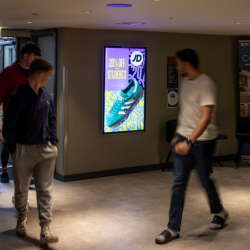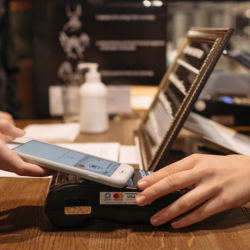Business leaders are waking up to the fact that keeping their employees happy is as important to their business as keeping their clients or customers happy
Not only does the employee experience drive overall business value, it’s intrinsically linked to the customer experience, even when the employee’s role doesn’t involve dealing directly with customers or clients.
In fact, 70% of executives say that improved employee experience results in better customer experience, according to a survey from Forbes and Salesforce. But while employee experience has moved up the agenda in the business world, many companies are still failing to meet employee expectations. One survey released earlier this month showed that while two-thirds of HR professionals think they’re delivering a positive employee experience, only 13% of staff agree.
A positive employee experience, where people feel valued and engaged, attracts talent and drives success. A bad experience, on the other hand, can seriously damage your business. According to Gallup’s State of the Global Workplace: 2023 Report, employees who are not engaged cost the world $8.8 trillion in lost productivity. The effect of poor employee experience can be broken into three key business challenges that directly impact both clients and customers: disengagement, high turnover and stagnancy.
- Disengagement amongst employees makes them unlikely to go above and beyond in their work and often delivering the bare minimum, which negatively impacts growth and makes clients and customers feeling unimportant.
- High turnover and constant change within client management teams also damages client-agency relationships, as agency staff struggle to maintain consistent client management and communication, which in turn leaves clients feeling unsupported.
- Stagnancy arises when an organisation doesn’t prioritise the happiness and growth of their employees or offer the right training and development. The knock-on effect is that customers and clients receive an average (or below average) level of service with no added value. In the long run, clients will be lured away by competitors.
A positive employee experience doesn’t just boost innovation and the customer experience, it spurs business growth. Employers that offer top-rated EX generate 25% higher profits than those that don’t, according to an MIT study. Creating a great employee experience isn’t about providing free coffee or throwing a Christmas party, it means equipping employees with the tools they need to fulfil their potential, and the incentive to go above and beyond for the business and its customers.
Here are three key ways to boost the employee experience:
1. Invest in training and development
Investing in employees’ professional growth not only reduces hiring costs, it empowers employees to provide additional value for clients. With knowledge comes confidence, and with confidence comes the desire to push yourself to do better — improving the customer experience.
Google has made continuous learning part of its culture, offering training, workshops and L&D opportunities for employees and, famously, introducing the concept of 20% time, where staff spend 20% of their work week on a work-related passion project of their choice. The investment in 20% time for employees led to the creation of some of Google’s biggest products, including Google News and Gmail.
As well as investing in AI to empower their employees by reducing the amount of administrative and menial tasks in their workday, businesses are using the technology to build highly sophisticated and personalised training and development and onboarding programmes. Companies are also offering AI ‘mentors’ to guide and support employees with their work, for example, software provider Pegasystems uses an AI-powered ‘coach’ to help its workers accomplish their objectives.
2. Celebrate employee success
One of the best ways to incentivise employees to deliver their best work is to acknowledge and celebrate them when they do well. This can be something as small as a thank you from a line manager to calling out their work during a company-wide meeting.
Many companies also use peer-to-peer employee recognition, where staff can earn rewards from their colleagues in recognition of their work. For example, Zappos allots its employees a $50 co-worker bonus that they can give to each other once a month as a reward.
3. Listen to feedback
When employees feel heard and respected by their employers, they’re more likely to care about the way they represent their organisation. Employee feedback can also uncover issues that hinder productivity such as hard-to-navigate systems or inter-team difficulties, which, when addressed, can help employees provide a higher level of service.
Along with quarterly surveys at Brandwidth, we have a ‘speak out’ feature within the company app, through which employees can anonymously submit problems and suggestions for improvement. This enables staff to raise any issues they may have without fear of repercussions, and also enables the business to continue to improve the employee experience.
Even with AI revolutionising the business and brand world, people will always be a business’ most important asset. Research shows that disengaged employees in the UK cost companies an estimated £52-£70 billion per year in lost productivity, and increased recruitment and retention costs. To succeed in the future, businesses need to start treating their employees like their most highly-prized customers.
Featured image: Shridhar Gupta / Unsplash



































